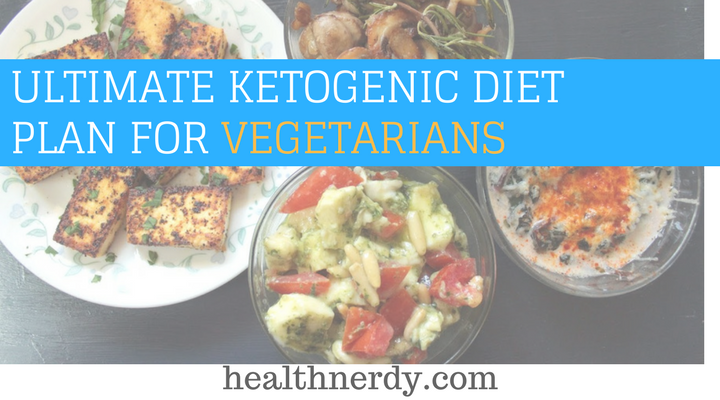
A ketogenic diet plan for vegetarians doesn’t sound like something that could work out. After all, most of us associate ketosis with a diet that is higher in fat and protein and has a deficient carb intake.
Considering the high protein part of that equation, a vegetarian ketogenic diet meal plan made for vegetarians might seem like something of a contradiction in terms.
What few people realize, though, is that ketosis is more about a balance of macronutrients than pigging out on one or two of these.
Eating meat is not essential to achieve ketosis. The protein can be replaced by nuts and seeds or by dairy products and meat substitutes.
Talking RIGHT Healthy protein supplements may also be an essential part of your routine. As an example HERE is what not to consume (Do Not Buy), and HERE is an example of a recommended product (I ONLY recommend a few selected brands)
Chia seeds and macadamia nuts are just two examples of foods that can help you increase your protein intake.
You will also have to include eggs and dairy to get the full range of nutrients so a raw vegan ketogenic diet – i.e., one that has no animal-sourced products in it at all, is something that is close to impossible. Also, low carb keto protein powders can help with that.
Can You Be A Vegetarian On A Keto Diet?
The simple answer is, “Yes.” A ketosis diet plan for vegetarians is nothing more than a low-carb vegetarian diet.You will just have to be more careful, that’s all. In this article, we will go through the basics of keto for vegetarians, so you can see how simple it can be for yourself.
Not convinced? Let’s start you off with some recipes so you can see how it works.
5 Best Vegetarian Keto Recipes
Goat Cheese and Mushroom Salad
(Serves 2)
- 4 oz. mild goat cheese, divided into four equal portions
- 2 tbsp. sesame seeds
- 2 tbsp. poppy seeds
- 1 tsp. onion flakes
- 1 bell pepper, deseeded and sliced into 8 wedges
- 1 tsp. garlic flakes
- ½ cup mushrooms, thinly sliced
- 1 tbsp. avocado oil
- 4 cups lettuce of your choice, divided into two equal portions
Mix the seeds, the garlic, and the onion. Dip each piece of cheese into the mixture so that they are coated evenly. Refrigerate.
Set your stove to Medium and fry the mushrooms and pepper until soft. Divide between the bowls of lettuce.
Place the goat cheese in the pan and cook for around 30 seconds per side and plate immediately.
Serve while still warm, with the avocado oil as the dressing.
Breakfast “Oats”
(Serves 6)
- 1 cup crushed walnuts or pecans
- 1/3 cup ground flax seed
- 3 oz. cauliflower “rice”
- 1/3 cup chia seeds
- ¼ cup cream
- 3 tbsp. butter
- 3 ½ cups coconut milk
- 3 oz. cream cheese
- 1 tsp. Maple flavoring
- ¼ tsp. nutmeg
- 1 tsp. Cinnamon
- ½ tsp. vanilla
- 10-15 drops Stevia
- ¼ tsp. allspice
- 3 tbsp. powdered erythritol
- 1/8 tsp. xanthan gum
Toast the nuts over a low temperature and then set aside.
Set the temperature to High and heat up the milk on the stove. When it is warm, add the cauliflower and bring it to a boil.
Reduce the heat to Medium-Low and then stir in the spices and flavorings.
Add the sweeteners next and follow these with the chia and flaxseed. The mixture should start thickening up a lot at this point.
Bring it to the boil and then add the butter, cream cheese, and cream. If the mixture is still too runny for you, add the xanthan gum.
Serve hot.
“Pasta” with Pesto
(Serves 2)
For the Pasta
- 3 zucchini
- ½ tsp. salt
For the Pesto
- ½ large well-ripened avocado
- ¼ cup raw walnuts
- 1 cup basil, as fresh as possible
- 2 cloves of peeled garlic
- ¼ cup grated Parmesan cheese
- ½ lemon
- Water (Use if the mixture needs to be thinned down)
- 1 tbsp. olive oil
- Seasoning to taste
- Basil for garnishing
Using a vegetable peeler, slice up the zucchini into ribbons. Discard the seeds. Place into a colander and sieve and salt it. Allow it to stand so that some of the moisture can drain off.
Put all the ingredients for the pesto into your food processor and chop until smooth and slightly runny. If necessary, add some water to thin it.
Heat your stove to medium. Add a glug of olive oil and then fry the zucchini until it just starts to get softer. While the zucchini is still hot, mix it with the pesto.
Garnish and serve straight away.
Pizza Please
(Serves 1)
For the Crust
- 2 large eggs
- 1 tbsp. powdered Psyllium
- 2 tbsp. Parmesan Cheese
- 1/2 tsp. Italian Seasoning
- Seasoning to taste
- 2 tsp. oil
For the Top
- 3 tbsp. keto tomato sauce
- 5 oz. Mozzarella Cheese
- 1 tbsp. basil, torn roughly
Mix together the dry ingredients first. Then add the eggs and blend well. Allow it to stand for a minute or so while making the crust.
Set your stove to Medium-High and heat up the oil until it is smoking. Place the base mixture into your frying pan, smoothing it out and making a roughly circular shape.
Observe. When the edges start to look firmer and begin to brown, you can flip it over and cook the other side. It takes around a minute or so.
Set your grill to High while waiting for the crust to cook.
Spread the tomato sauce on the base and top with the cheese. Place in the grill and cook until bubbling hot.
Add the basil and serve.
Cauliflower Sides
(Serves 8)
- ½ an onion, finely chopped
- 1 medium cauliflower
- 1 cup grated cheddar
- 1 cup sour cream
- Seasoning to taste
Break the cauliflower up into florets and put in a greased oven-proof dish. Add the rest of the ingredients and mix well.
Set your oven to 350° F and bake for half an hour.
7-Day Vegetarian Keto Diet Meal Plan
This is an idea of what a 7-day menu plan would look like.
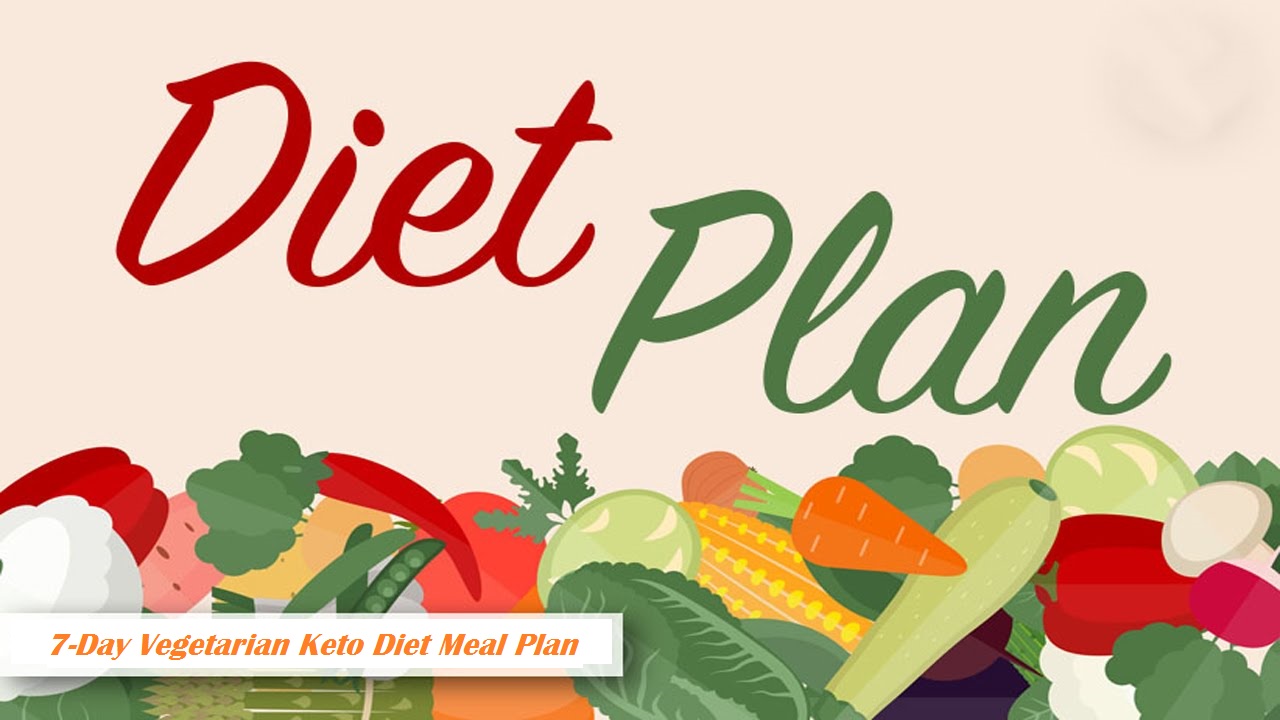
Monday
- Breakfast: One or two slices of low-carb bread with lashings of butter and/or cream cheese.
- Lunch: Goat Cheese and Mushroom Salad
- Dinner: Pizza served with fried asparagus and low-carb aioli.
- Dessert: Greek yogurt with a few drops of Stevia
Tuesday
- Breakfast: One low-carb pancake with butter and maple flavoring.
- Lunch: A serving of keto vegetarian moussaka.
- Dinner: Pizza topped with asparagus.
- Dessert: Home-made ice cream made with full-cream milk and erythritol
Wednesday
- Breakfast: Breakfast oats.
- Lunch: Feta and spinach low-carb wraps.
- Dinner: Cauliflower Sides with marinated tofu
- Dessert: Half a baked apple topped with cinnamon and whipped cream.
Thursday
- Breakfast: One or two slices of low-carb bread with lashings of butter and cream cheese.
- Lunch: Pizza with mozzarella, cheddar, and parmesan topping,
- Dinner: “Pasta” with Pesto.
- Dessert: Greek yogurt with a few drops of Stevia
Friday
- Breakfast: Breakfast oats.
- Lunch: Creamed spinach with crushed walnuts
- Dinner: Tofu steaks with Cauliflower sides
- Dessert: Heavy cream with a small handful of berries mixed with it.
Saturday
- Breakfast: A small tub of Greek yogurt with 2 tablespoons of Chia seeds and a few crushed walnuts.
- Lunch: 2 boiled eggs, with low-carb mayo and asparagus fried in butter.
- Dinner: Broccoli, lightly steamed and served with flaked almonds and parmesan.
- Dessert: A handful of berries blended with Greek yogurt and sweetened with erythritol.
Sunday
- Breakfast: One or two slices of low-carb bread with lashing of butter and/ or cream cheese.
- Lunch: Goat Cheese and Mushroom Salad
- Dinner: Pizza served with fried asparagus and low-carb aioli.
- Dessert: Greek yogurt with a few drops of Stevia
Foods to avoid
What we have given you above is just a sample eating plan. You do need to ensure that you still take in enough macronutrients to your sugar levels consistent.
Once your body has adapted to the vegetarian ketosis diet, you should not feel hungry.
If you do, it is an indication that you are not eating enough or that you are eating too many carbs.
Here is a list of foods that should be avoided on a vegetarian keto diet:
- Grains: Like rice, cereal, and corn.
- Legumes: Like beans, lentils, and peas.
- Sugar: Like cane sugar, honey, maple syrup, etc.
- Tubers: Like yams and potatoes.
- Some Fruits: Like bananas and grapes that are loaded with carbs.
These are all foods that people are likely to cut out when they are on a no-carb diet plan for 2 weeks, but that they make the mistake of including in their day-to-day eating when the plan is finished.
And, while things like beans and lentils are highly nutritious, they are also high in carbs and so have no part in a plan.
Switch out the green beans for collard greens, and you will have a head start when it comes to reducing the number of carbs consumed on a daily basis.
Before you get concerned that there are a lot of exclusions on the list, there are a lot of foods that you can eat. Let’s have a look at these.
Vegetarian Keto Diet Food List / Shopping List
Foods to eat and that you can put on your shopping list:
- Vegan Meat Substitutes: Like tofu, tempeh, and seitan.
- Leafy Greens: Like kale and spinach.
- Vegetables that Grow Aboveground: Like cauliflower, broccoli, and zucchini.
- Full Fat Dairy and Eggs: Like cream, hard cheese, butter, goat’s cheese, etc.
- Nuts and seeds: Like almonds, pumpkin seeds, walnuts, sunflower seeds, etc.
- Berries and Low Glycemic Fruits: Berries such as blackberries, raspberries, and blueberries have fewer natural carbs and so can be enjoyed from time to time. Apples also have a relatively neutral effect on your blood sugar.
- Avocado and Avocado Oil: Avocados are delicious and full of healthy fats. They should be considered pantry staples. The oil is great for salad dressings and highly stable for cooking with.
- Some Sweeteners: Like erythritol, xylitol, monk fruit, and stevia.
- Fats: MCT oils, coconut oils, red palm oil, and olive oil. Steer clear of highly processed seed oils like sunflower oil.
- Dairy Alternatives: Like coconut milk and coconut cream.
Bad Carbs (High Glycemic Index, Processed)
Generally speaking, the more highly processed food is, the more easily your body can digest it and the worse it is for you. Do a simple check – if the food has more than five ingredients, it should be avoided altogether.

Try to eat food in as natural a state as possible to get the best benefits.
Try to include some vegan recipes in your diet as well to help you eat more cleanly and speed up your weight loss efforts.
Carbs in this category are high on the glycemic index and can cause spikes in your blood-sugar level.
Generally speaking, if something has been "refined," it probably is not very good for you. Refined foods are usually low in fiber.
Fiber is a good thing because it helps us feel fuller and helps to reduce the rate at which the body can break the food down.
Good Carbs
Not all carbs are bad. It is also a misnomer that high-fiber foods are bad for you if you are following a ketogenic diet.
What you want to look for are foods that have a higher fiber count. The fiber is not digested, so it does not count towards your daily carb count.
Good carbs are those that have a more balanced effect on blood sugar and that provide longer-lasting energy.
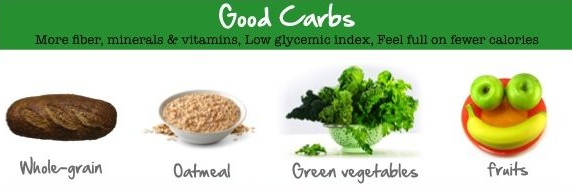
Low-carb Vegetables
Low carb vegetables generally have a good fiber count and include veggies like cauliflower, zucchini, and broccoli.
Generally speaking, if the vegetable grows above ground, it is like to be fine to eat. Vegetables in the form of tubers, like carrots, are high in naturally occurring sugars and so should be avoided.
Condiments
You can get quite a few low-carb versions of condiments on the market. Though, it is better to make your own so that you know exactly what is put into it.
Sugar is added to many condiments to help improve their flavor so be careful to scrutinize the label before buying anything.
If you are unsure, stick to flavoring your food with spices or simple salad dressings made with vinegar and oil instead.
Fruits
For most keto-friendly diet plans, fruit is a no-go zone. Fruits need to be handled carefully because most do contain high levels of sugar.
Fruits such as berries are okay to add in occasionally, but fruits such as papaya, pineapple, and bananas are too high in sugar.
It is also important that you don’t overindulge in fruit – check what the recommended portion size is and how many net carbs the fruit contains first.
Condiments and Spices
Spices are a great way to add flavor to meals without piling on the carbs.
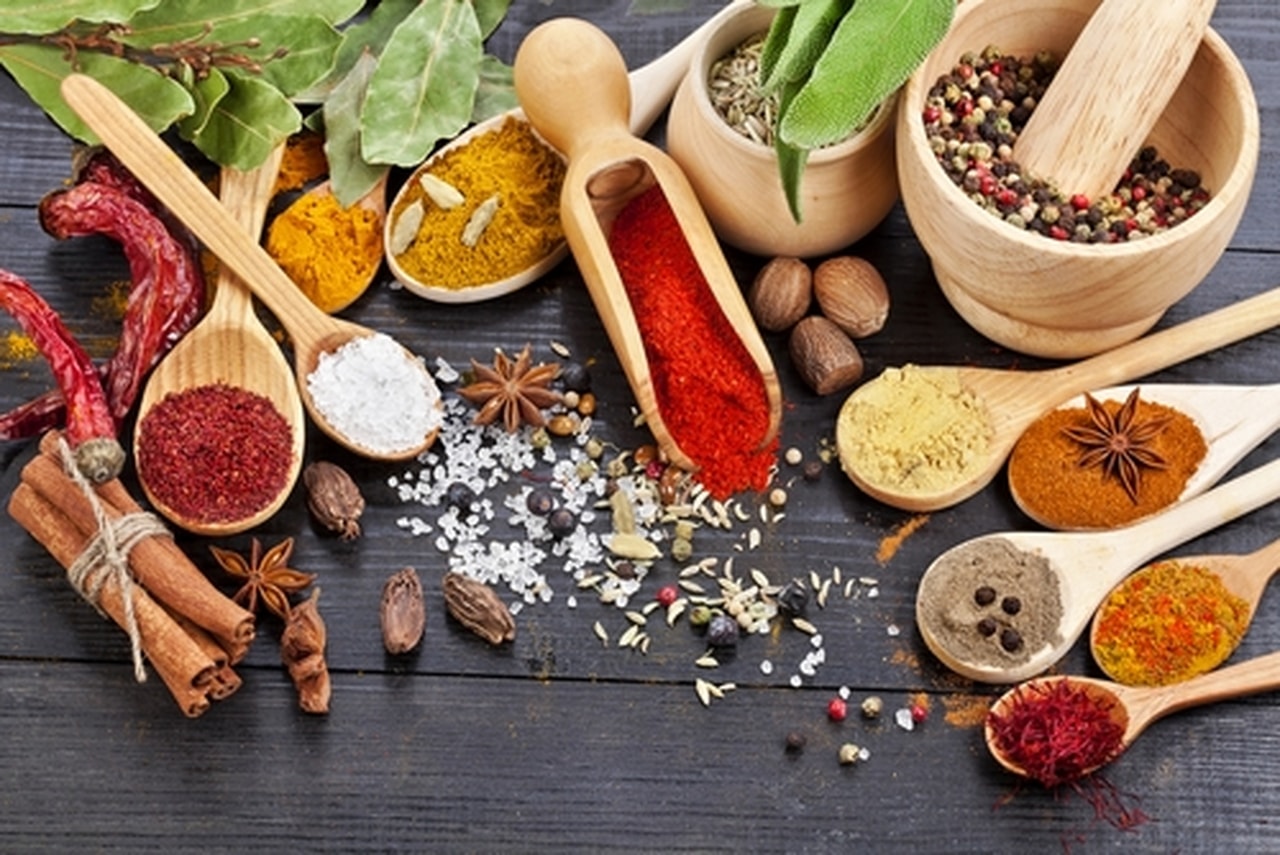
Cayenne pepper adds a nice zing that can replace hot sauce and cinnamon adds a touch of sweetness to your keto meal that is hard to beat.
Protein
This is one area that can become problematic. When you cut out meat and fish, you are just left with dairy and eggs.
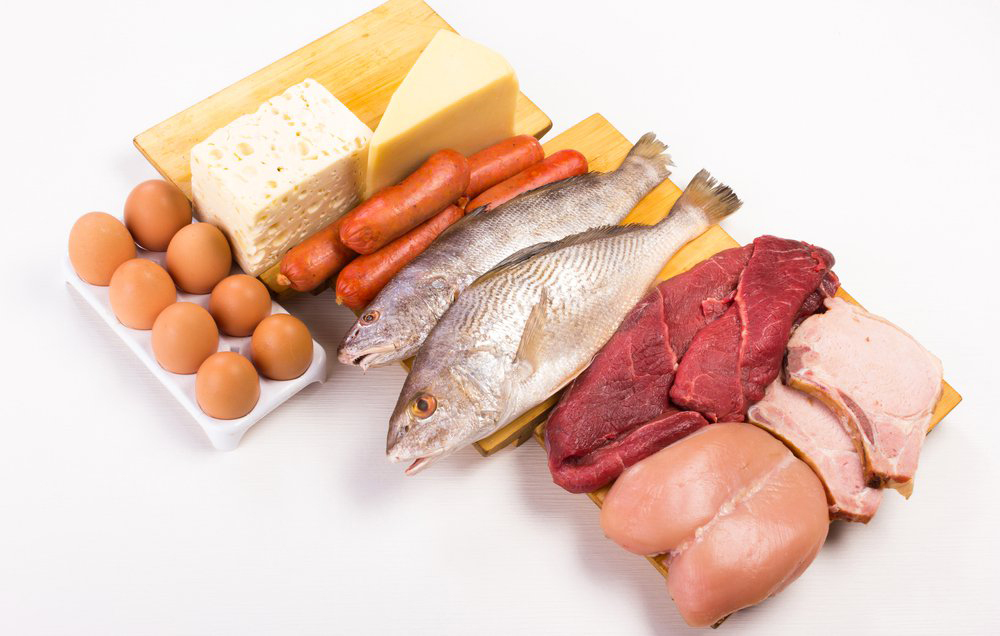
And there are only so many times that you can eat an omelet without cracking.
There are other alternatives, though:
- Tofu: This is derived from soybeans and has a high calcium and protein content. It is also very versatile in cooking and can be a viable meat substitute if properly prepared. The only problem is that it can be very bland so it should be well seasoned or properly marinated before you cook it. It is soft and can seem a little mushy.
- Tempeh: This is also derived from soybeans, but it has a much firmer texture. It is easier to pass off tempeh as ground meat, but you must also take proper precautions.
- Warning: It is a good idea, with both these, to see how your body reacts to them. If you start feeling more sensitive to the cold, battle with constipation or have very dry skin, you should limit consumption and possibly consider taking an iodine supplement. Soy might impair the functioning of your thyroid. It is wise to look for an organic source for all your soy products.
- Seitan: This is made from gluten in wheat, tamari or soy sauce, seaweed, garlic, and ginger. It is an excellent source of protein, has a lower fat content, and is rich in iron as well. However, it is not suitable for those with gluten sensitivity.
- Protein Powders: These can be a useful substitute if you do not like the idea of eating tofu and want to up your protein intake. You need to read the labels carefully first though and make sure that the carb count is low, and the protein content is high. Pure whey protein powder or an isolate made from pea protein are good ways to go.
One of the biggest problems with this kind of diet for vegetarians is getting enough protein. If you are battling, get yourself an unflavored protein powder.
You can use it to make smoothies, or as a substitute for milk, for example.
Fats for Vegetarians in Ketosis
It is not that hard for you to get enough fat as a vegetarian on a ketogenic diet. You will get quite a bit just by including dairy and eggs.
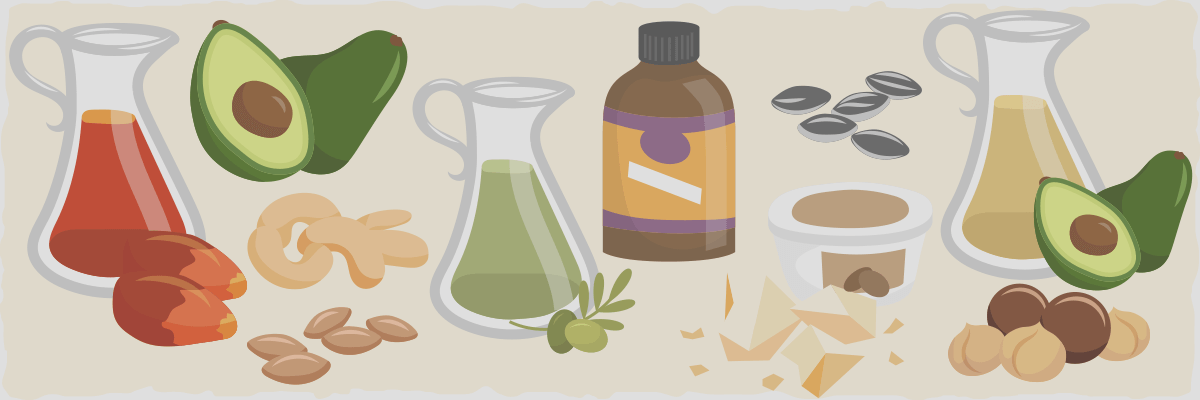
You can further supplement your fat intake by adding coconut oil, olive oil, or some form of nut oil.
Here are some ideas for you:
- Avocado Oil: This extremely healthy oil is loaded with monounsaturated fats. It is extremely stable when heated and so works well for cooking. It tastes great as well and can add some extra oomph to your salad dressings.
- Coconut Oil: This is a ketogenic staple. It has the perfect balance of fatty acids and can help to speed weight loss. It is also highly stable and good for baking or cooking with. However, you need to make sure that the temperature stays under 350°F.
- MCT Oil: This is another oil that has become popular with those on a keto-friendly diet. It is a derivation of palm and coconut oil and is a good source of fuel for the body. It can be added to just about anything to give you energy and keep you calm and focused.
- Olive Oil: This is an oldie but goodie. Also full of monounsaturated fats, it is a good oil to beef up your fat count. It tastes great as well and is good for cooking with.
- Red Palm Oil: This has a dual purpose in a keto plan – it is a fat source and also a rich source of the A and E Vitamins. It tastes a lot like carrots and is very rich in texture. It is a delicious oil to cook with.
- Avocados: There once was a time when avocado was a bad word for a dieter. Isn’t it great that things have now changed? Avocados are rich and creamy and very versatile. Use them to boost flavor and your fat intake.
Nuts and Seeds
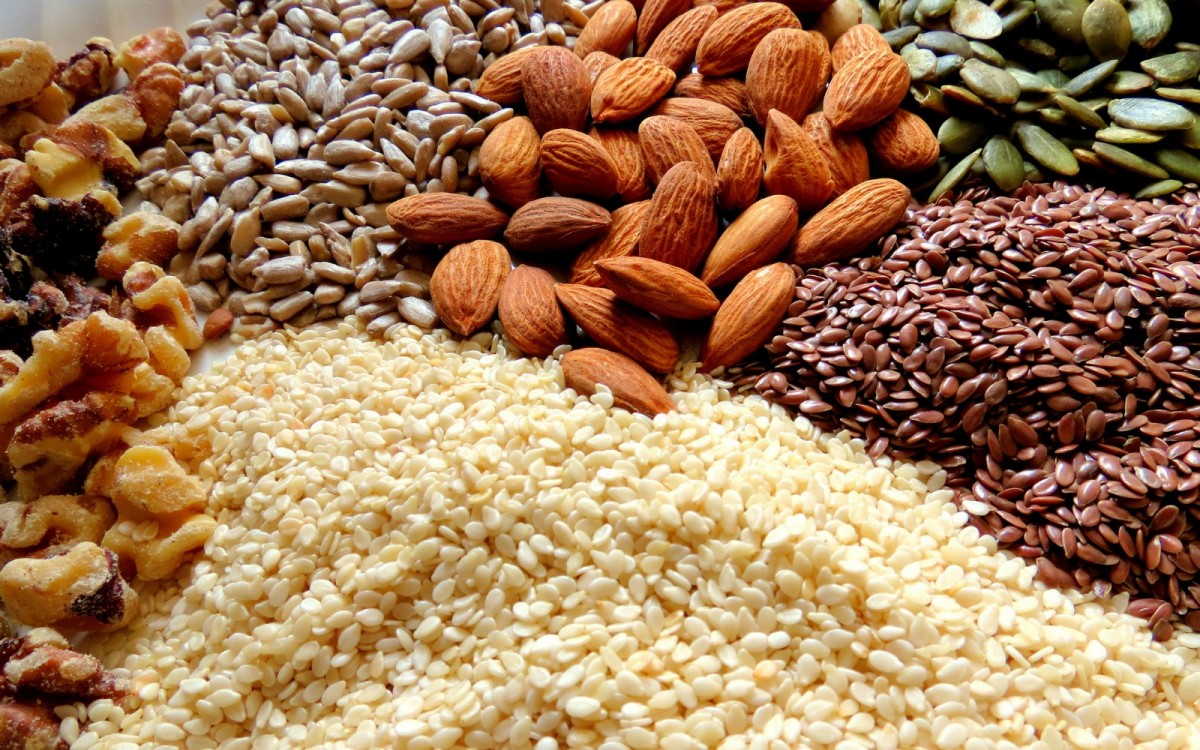
- Nuts: Again, once these were considered highly unhealthy. Now we know better. Nuts are protein power packs and great sources of a range of nutrients and healthy fats.
- Seeds: Seeds do also have a high-fat content and can help you improve your intake of fat and get a range of other nutrients as well.
- Warning: Both nuts and seeds have great benefits, but they might also have high carb levels as well. Pumpkin seeds, for example, have 30 grams of protein and 54 grams of carbs for each 100-gram serving. So you cannot go nuts with them.
Vegan Keto Diet
A vegan keto diet is very different from the one that we have described above.
With a vegan diet, you do not eat any food that is sourced from animals in any way. So no dairy, or eggs, for example.
This makes it a lot harder to follow a ketogenic plan, but it can be done if you are determined.
You would need to rely a lot on soy-based products, nuts, and seeds as your main nutrient and protein sources.
Alternative dairy sources would include soy milk, coconut milk, and almond milk.
If you do decide to go this route, you have to plan your diet very carefully.
It would not be a bad idea to consult a dietician to help you get the right levels of macronutrients here.
Frequently Asked Questions
Can Vegetarians Eat Low Carb?
Yes, most definitely. It just requires some careful planning to get it right.
What Can You Not Eat On A Ketogenic Diet?
We have given a comprehensive list of foods in the article but a general guideline is to cut out anything that is processed, refined or that has a high carb count.
Most junk food, cookies, sweets, convenience foods, etc. fall into this category.
Can I Eat Greek Yogurt On Keto Diet?
Ye,s you can but you do need to ensure that it has no added sugar.
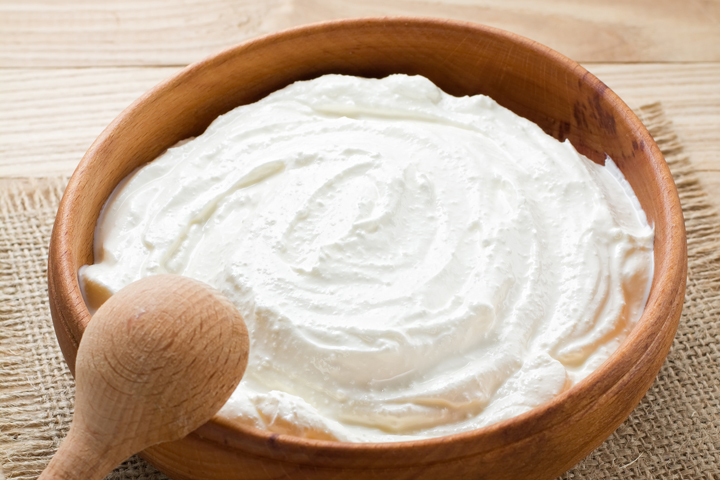
Traditional Greek yogurt is thick and creamy and prepared without sugar, but that does not mean that all other sugars will be the same.
What are exogenous ketones?
You can read more about exogenous ketones here.
Can You Go on a Keto Diet if You Are Vegetarian?
Yes, it is possible to follow a ketogenic (keto) diet if you are vegetarian. A ketogenic diet is characterized by a high fat intake, a moderate protein intake, and a very low carbohydrate intake, which forces the body to enter a state of ketosis, where it primarily burns fat for energy instead of carbohydrates. Vegetarians can adapt this dietary approach by making strategic food choices to meet their nutritional needs while keeping carbohydrate intake low.
Here's how vegetarians can successfully implement a keto diet:
- Fat Sources: Vegetarian keto diets emphasize healthy fats such as avocados, nuts, seeds, and oils (e.g., olive oil, coconut oil). These fats provide the majority of caloric intake and are crucial for maintaining ketosis.
- Protein Sources: Vegetarians can obtain protein from sources like eggs, dairy products (if they are lacto-vegetarian), tofu, tempeh, seitan, and plant-based protein sources like soy, nuts, and seeds. It's important to moderate protein intake, as excessive protein can potentially disrupt ketosis.
- Low-Carb Vegetables: Non-starchy vegetables like leafy greens, cauliflower, broccoli, zucchini, and bell peppers are suitable for a vegetarian keto diet. These vegetables provide fiber and essential nutrients while keeping carbohydrate intake low.
- Dairy and Dairy Alternatives: Vegetarian keto dieters can include full-fat dairy products or dairy alternatives like almond milk, coconut yogurt, and vegan cheeses if they are lacto-vegetarian or lacto-ovo-vegetarian.
- Plant-Based Fats: Incorporating plant-based fats like coconut oil, olive oil, and nuts into meals is essential for maintaining ketosis while ensuring a balanced diet.
- Supplements: Vegetarians might need to consider supplementation for certain nutrients like vitamin B12, as this vitamin is primarily found in animal-based foods. It's crucial to monitor nutrient intake and consult with a healthcare provider to address any deficiencies.
- Carb Monitoring: Careful monitoring of carbohydrate intake is critical. It's recommended to limit daily carbohydrate intake to around 20-50 grams or less, depending on individual tolerance.
It's worth noting that a vegetarian keto diet may require more careful planning and attention to nutrient intake compared to a standard keto diet that includes animal products. Meeting nutrient needs for essential vitamins and minerals, such as vitamin B12, iron, and zinc, can be challenging for vegetarians. Therefore, consulting with a registered dietitian or healthcare professional experienced in vegetarian nutrition is advisable to ensure a well-balanced and healthy dietary plan.
In summary, vegetarians can successfully follow a keto diet by emphasizing plant-based fats, selecting appropriate protein sources, and carefully monitoring carbohydrate intake. Proper planning and attention to nutrient intake are crucial for a balanced and sustainable vegetarian keto diet.
Can You Eat Peanut Butter on Keto?
Yes, you can eat peanut butter on a ketogenic diet, but it's essential to choose the right type and consume it in moderation. Peanut butter is relatively low in carbohydrates and can be incorporated into a ketogenic meal plan as part of a balanced diet.
Natural peanut butter, made from just peanuts and salt without added sugars or hydrogenated oils, is the best option for keto. It typically contains around 2-4 grams of net carbs per serving, making it suitable for those following a low-carb or ketogenic lifestyle.
Peanut butter is a good source of healthy fats, protein, and fiber, which can help keep you feeling full and satisfied on a ketogenic diet. It also provides essential nutrients like vitamin E, magnesium, and potassium.
However, it's important to be mindful of portion sizes when consuming peanut butter on keto, as it is calorie-dense. Overeating peanut butter can lead to consuming too many calories, which may hinder weight loss efforts, a common goal of the ketogenic diet.
Additionally, some peanut butter brands may contain added sugars or other ingredients that can increase the carb content. Always check the nutrition label and ingredients list to ensure you're choosing a low-carb option.
In summary, natural peanut butter can be included in a ketogenic diet in moderation due to its low carbohydrate content and nutrient profile. Choosing high-quality, unsweetened peanut butter and monitoring portion sizes can help you enjoy this delicious spread while staying in ketosis.
Are Bananas Keto?
Get rid of unwanted weight with bananas in your diet plan. Bananas are high in carbohydrates that can make you feel hungry. Just imagine if you have a huge banana, how much will you eat? Because bananas have a high level of carbohydrates they are often known as fruit for overweight individuals. Even if they are fruit, they can be fat in your body. Hence, in order to get the most out of this food, it is best to limit yourself to two bananas for breakfast.
Bananas should not be consumed within one hour of your keto breakfast and can be consumed just before bedtime. Bananas are high in carbohydrates so you should limit your banana intake to no more than one banana per meal. Bananas can have an effect on blood sugar so the banana is best consumed after a light snack or a small meal. It is recommended that you eat the banana before your meal and try to chew the banana and then swallow it. Otherwise, you can use a spoon. Don't pour the banana out onto your plate keep it in a bowl so you can easily eat it. You can have a banana within three hours of your meal.
Could Vegetarians and Vegans Do Ketosis?
If you're not sure if you can achieve ketosis naturally without supplements and weight loss, Dr. David Katz, the director of the Yale-Griffin Prevention Research Center told NBC News, "You can, and should, give it a shot. But don't try to do it alone. Get the right guidance, and you will see how incredible this experience can be." And remember, ketosis — as a state — is all about what you choose to do, not just what you don't do. That said, the ketogenic diet has been an effective and safe way to lose weight for some time now, though many people make mistakes along the way. So next time you reach for a glass of milk, remember: it's the least nutritious thing you can eat for breakfast.
How Do Vegetarians Cut Out Carbs?
There are several ways to accomplish the goal of going vegetarian or vegan and still eating plenty of nutritious, plant-based food. Calorie restrictions are based on protein intake and can be combined with other factors like how hungry you are and the portion size you eat. There are no calories to be found in vegetables. Plus, they have no cholesterol, fat, or protein in them. For someone with a high appetite, you can eat several smaller meals a day, with different colors of vegetables, and no need to restrict calories or portion sizes. A vegan diet can be very satisfying and can include a lot of vegetables.
However, because it is plant-based, it requires a different way of eating that often produces extreme hunger between meals. Some vegetarians eat meat without a problem. Some of them can eat meat if they eat a vegetarian diet. The key is to have a plan and stick to it. When Do You Eat Vegetables? That depends on your lifestyle. For some people, they eat vegetables all day long. There are many nutrients in vegetables that are not found in animal-based foods, such as vitamins, minerals, fiber, and phytonut.
Vegetarian Keto Diet Without Eggs
Black is the best color to eat if you are on a high-protein diet. You should avoid consuming protein sources that are dark in color. Here are some fruit and vegetables that are high in vitamin E and vitamin A. Green leafy vegetables are filled with phytonutrients and are great sources of antioxidants. Keto diets are all the rage these days, so much so that you probably already have one in your back pocket. If that's the case, you're probably doing things completely wrong.
Yes, you're likely burning through all the fat you consume (more on that in a moment) and that's great. But since they're high in carbs, the lack of protein can make you feel sluggish, which is why some people have switched to vegetarian versions. Not only do they allow you to eat more veggies, but they also avoid the entire protein trap. The only problem is that meat-free meals are a lot harder to pack on the protein you need.
How Long Is It Safe To Do Ketogenic Diet?
The beauty is that it is safe to follow over the long-term. It completely changes the way your body creates energy.
Once the initial adjustment period is over, you will feel calmer, more focused, and have a lot of energy.
With the vegetarian option, the only thing is that you need to be more careful about getting enough nutrients. That means following a varied diet.
If you started the diet as a way of losing weight, you would need to make adjustments when you reach your goal weight.
When this is achieved, you can increase the carb count up to the point where you no longer lose weight but are not gaining it either.
Over the long term, combining a vegetarian lifestyle with ketogenic principles can be a fantastic way to lose weight and feel healthy again.
It shouldn’t be seen as a temporary fix, though. It is a complete lifestyle change.
The great news is that once you get used to this new way of eating, you won’t want to go back anyway.